Flows from the nose means. Yellow water flows from the nose. Causes of an unpleasant symptom
The reasons for which water flows from the nose, can be many. In some situations, secretion is a natural physiological reaction, in others it is associated with viral infection, allergies or more serious nasal disease. Completely get rid of unpleasant symptom possible only after identifying the exact causes of the violation.
The reasons
The main reasons for the formation of a secret in the nasal passages are as follows:
- rhinitis;
- sinusitis (mainly sinusitis);
- reaction to cold;
- allergic reactions;
- injuries.
Rhinitis
The most common cause of severe nasal discharge is flu and a viral infection. And if the patient’s flu is more concerned with headaches, heat, aches in muscles and joints, the main manifestation of viral rhinitis is precisely the abundant secretion from the nasal passages.
Sinusitis
Sinusitis - inflammation of the nasal sinuses, which develops on the background of not completely cured rhinitis when joining bacterial infection. Most often, inflammatory processes occur in sinusesah (in this case, the pathology is called sinusitis). Sinusitis is characterized not only by the formation of a secret in the nasal passages. As a rule, a high body temperature joins the inflammatory processes in the nose and severe headache. There may be an unpleasant smell from the nose. With these symptoms, you yourself can not do anything; treatment should be handled by a specialist.
Cold allergy
High susceptibility of the body to low temperatures is quite common. When entering the frost, in addition to secretion, skin irritation appears, the cheeks are covered with red spots.
Allergy
Allergies can be caused by various irritants: pollen of some plants, down of birds and animal hair, some medicines and products. To get rid of the problem, it is important to identify the allergen and, if possible, limit contact with the irritant. Drug therapy also obligatory because allergic rhinitis and a rash can, if untreated, lead to more serious conditions: angioedema or anaphylactic shock.
Injuries
Fluid can be produced by the nasal mucosa in the event of a nasal injury or traumatic brain injury. In the latter case, liquorrhea develops - nasal discharge cerebrospinal fluiddue to impaired integrity of the meninges.
In children, a traumatic rhinitis often develops as a result of hitting foreign body in the nose, and after its extraction, the separation of the secret immediately stops
The nature of discharge from the nose of a secret
Why water flows from the nose can be understood by the nature of the discharge of the contents. It is the color and consistency of the secret that indicates the type and cause of inflammation.
Clear liquid
The mucosal production of the nasal passages of a clear fluid most often occurs in the initial stages of acute respiratory viral infection. This is a protective reaction of the body, aimed at washing out pathogens from the nose. Usually such processes are accompanied by a slight burning sensation and dryness in the nose. As the infectious process worsens, the secreted secret becomes more dense. With proper selection of drugs with the infection can cope for a week, and complications do not arise.
Excretion of water from the nasal passages during exposure to cold air or after physical labor is considered to be a normal reaction and should not cause concern. If the secret is released when the head is tilted, it is better to visit a doctor, as this may be a symptom of a cyst. maxillary sinus. The disease is almost always accompanied by frequent sneezing, feeling of itching and tingling in the nose, general malaise.
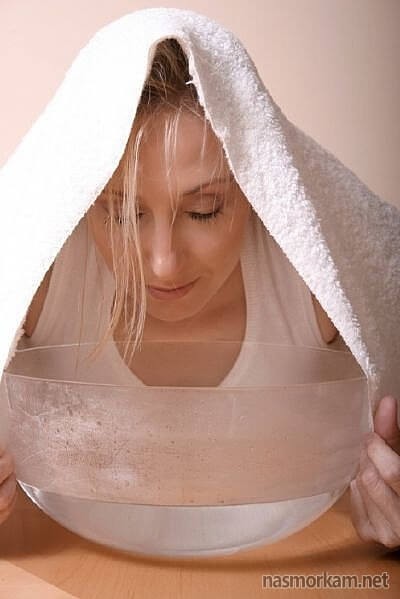
Cyst or polyps in the nose are most often the result of a curvature of the nasal septum or other abnormalities in the structure of the nose.
Another reason for the appearance in the nose of a liquid secretion is allergy. In this case, water flows constantly, and related symptoms they become tearing and photophobia, pharyngeal edema, skin rash. To get rid of unpleasant phenomena, it is enough to identify and, if possible, eliminate contact with the allergen. If this is not possible (for example, if you are allergic to pollen), you will need to take antihistamines.
Yellow or brown secret
The yellow color of the secreted secretion indicates the development of bacterial inflammation, most often - antritis. This is quite a serious disease that requires mandatory consultation of the doctor and proper treatment. Otherwise, the bacterial infection can spread to the brain tissue and lead to dangerous consequences.
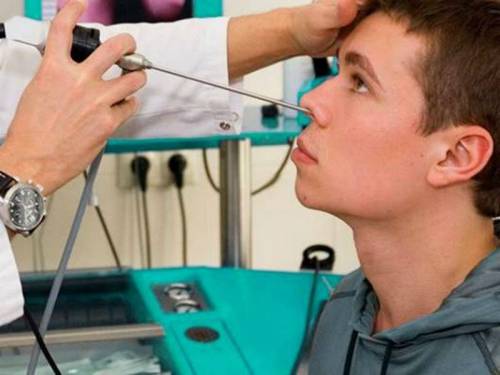
If at the very advanced stages of sinusitis drug treatment is ineffective, it requires an unpleasant surgical procedure - puncture of the maxillary sinus
Brown fluid is formed in the advanced stages of sinusitis. because of severe inflammation capillaries become fragile and fragile, burst. The blood and secreted mucus mix, the secret takes on a brown color.
Another reason for the formation of brown fluid can be a nose bridge injury (bounce, fracture) or surgery.
Blood mucus can also appear on the background of increased intracranial pressure. Therefore, with regular causeless bleeding from the nose, an urgent consultation with the doctor and a medical examination are required.
Treatment
It happens that the water from the nose pours only 2-3 days, after which the unpleasant symptoms pass on their own. If secretion continues for a week or longer, then competent therapy will be required. How to treat nasal discharge depends on the reason for their appearance.
Viral rhinitis
For nasal discharge due to viral infection of origin, it is recommended:
- washing the nose with saline or herbal decoction (chamomile, sage);
- warming up the nose;
- use of nasal drops (in case of a cold in a child) or sprays (for adults) with vasoconstrictor action (Tizin, Otrivin, Xylometazoline);
- use of local antiviral drugs (oxolinic ointment, Viferon ointment);
- reception antiviral drugs inside (Ingavirin, Kagocel).
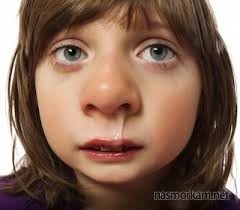
Doctors do not recommend using nasal drops with a vasoconstrictive effect for longer than 3–5 days, and oil-based products for more than 2 weeks.
Sinusitis
With bacterial sinusitis (including sinusitis) are assigned to:
- systemic antibiotics (macrolides, cephalosporins, penicillins);
- local antiseptics (solution Furatsilina, Miramistin);
- antibiotic nose drops (Polidex, Isofra);
- vasoconstrictor drops and sprays;
- viscous mucus diluents (Rinofluimucil);
- antihistamines (if the nose is stuffed up due to severe inflammation and swelling of the mucous membrane).
Allergy
If the cause of the discharge is an allergic reaction, these methods of treatment will not give results. The main complaints of a patient suffering from allergies are: sneezing, feeling tickling in the nose, tearing and nasal discharge. In such situations, the application requires:
- drops and sprays for the nose with antiallergic action (Nasonex, Fliksonaze);
- antihistamine drugs inside (Loratadin, Cetrin, Erius, Zodak);
- nasal drops with glucocorticosteroids (with severe forms allergies).
If an allergic reaction is caused by pollen of flowering plants, frequent headwashing, airing indoor air and frequent wet cleaning will help to reduce unpleasant phenomena: after all, the allergen particles settle on surrounding objects, clothing and hair.
In case of hypersensitivity to cold, symptomatic treatment is carried out. Local and systemic antihistamines are used, and in the cold season, the skin is smeared with a protective cream before each exit to the street.

Constant airing and humidification of the air in the room contributes to the fastest recovery from any rhinitis, better with a special humidifier.
What can be done at home
The best method of dealing with abundant liquid discharge from the nose at home - irrigation mucous saline. Its application:
- helps to cleanse the nasal passages from accumulating mucus;
- reduces inflammation in tissues, accelerates the restoration of damaged mucous membrane;
- does not cause adverse reactions and has no contraindications (safe for adults and children).
Other common home remedies include:
- plantain infusion (a tablespoon of dry grass pour a glass of boiling water, insist and strain, drink 100 ml up to 3 times a day);
- inhalations with eucalyptus or fir oil (relieve swelling of the mucous membranes, reduce inflammation, improve nose breathing);
- onion or garlic (peel, chop, inhale fumes);
- fresh Kalanchoe juice, aloe (nose mixture or use separately).
Folk remedies need to be used carefully, especially when treating a child. Some of them (for example, onion or garlic juice) can burn the nasal mucosa, which only aggravates the inflammation.
Regardless of the cause of a runny nose in a child or an adult, with abundant secretions it is recommended to wash the nose more often, and to lubricate the skin near the nasal passages with healing ointments in order to avoid irritation. If a runny nose occurs frequently, it is better to be examined by an otolaryngologist, an allergist and an immunologist. Identifying the exact cause of nasal discharge and prescribing appropriate treatment will quickly and permanently get rid of unpleasant symptoms.
A bad cold is a common problem that anyone can face. It arises by for various reasons: due to infectious disease, allergic reaction, colds, etc.
Important to render emergency assistance to the patient who has a nose proper treatment. You will need to find out the exact cause of rhinitis and begin to deal with the problem.
If a strong discharge do not stop longer than 3-4 days, you should contact the therapist to find out the correct diagnosis.
Why nasal fluid runs: causes
 Patients often hear complaints that they have snot like water from their noses. Moreover, abundant secretions may be present. for a long timecausing discomfort to a person. It is not the symptom itself that should be treated, but the illness that caused it. Then there will be a good effect from the therapy.
Patients often hear complaints that they have snot like water from their noses. Moreover, abundant secretions may be present. for a long timecausing discomfort to a person. It is not the symptom itself that should be treated, but the illness that caused it. Then there will be a good effect from the therapy.
Possible reasons:
- inflammatory process;
- sinusitis;
- severe allergies;
- rhinitis;
- sinusitis.
Diagnosing yourself is not easy when there is no medical education. Therefore, if constantly flow liquid snotshould visit a doctor. At home, you can try to identify the disease, based on other symptoms.
With ARD characteristic severe runny nosearising unexpectedly. At first, nasal discharge is fluid, but gradually becomes thicker. Sinuses are laid, there may be fever, cough and redness of the throat. With this disease, rhinitis does not last more than two weeks.
During an allergy, the patient often sneezes, tearing and redness of the face are possible. Rhinitis may occur intermittently when contact with an irritant occurs. In order to get rid of an unpleasant symptom, it is necessary to eliminate contact with the pathogen and take a pill.
It happens that a healthy person runs nose. This can happen after physical activity or a long stay in the cold. In this case, do not need to do anything, it is quite normal.
Sinusitis, and its type - sinusitis, these are serious diseases that require complex therapy. They are characterized by the following signs: general weakness, constantly fever, headache, feeling of fullness and nasal congestion, tearing. If you suspect them, you will need to visit a doctor.
What color is snot? Yellow, green, transparent.

Doctors at the reception often ask patients about the shade of secreted mucus. Color helps to determine the reason for which there snot.
Clear secret It is considered common, it can occur even in a healthy person. By the way, there may be white discharge that occurs after drinking dairy products. They should not be abundant and cause congestion of the sinuses. If a person feels good and does not suffer from other symptoms, then colorless or white mucus can not treat. However if thick transparent snot it is plentifully allocated, the nose badly breathes, sneezing is present, then it can testify to an allergy or an initial stage of cold.
Snot bright yellow signal the presence of infection in the body. If they are saturated, then there is a struggle with the disease, for example, with SARS. After 3 days, they tend to darken. The reasons for contacting the clinic are the following signs: migraine, cough and fever. If the state of health does not improve in 3-4 days, then the patient needs medical assistance.
Blue highlights extremely rare. They are observed in approximately 1 in 10,000 patients. This shade is caused by gram-negative aerobic rod-shaped bacteria. You must contact your doctor if they do not stop after 3 days, as this indicates a serious infection.
Orange or red liquid from the nose indicates that there is blood in it. This is not a reason to worry, because this is due to inflammation of the sinuses. Blood vessels in the nose, very thin and easily damaged, so this can lead to the fact that they may appear blood clots. This is possible if the air is excessively dry or the patient has too often used a spray to relieve congestion. Usually, the problem disappears itself after treatment of the common cold by conventional means.
Brown slime occurs in smokers. The harmful habit irritates the nasal passages, and the components of the cigarette stain the nasal secret to brown. The problem will go away if you quit smoking.
Yellow green snot signaling a bacterial infection. A light green tint appears when blood cells begin to fight inflammation. Green color may be present as with a common cold, and with sinus. If the state of health does not improve within seven days, you should immediately seek medical attention.
Gray and black mucus occurs in many people. It is not dangerous, cause shade of dirt, ash and smoke. As you know, the discharge does not pass dust and similar substances into the body, therefore, the shade of the secret changes.
Snot flowing stream in an adult: what to do?
A runny nose is always a protective reaction of the body that causes many problems and inconveniences. The person will suffer from nasal congestion and constant mucus secretion. In order not to disturb the usual mode of life, it is necessary to take immediate action.
Treatment depends on the cause of rhinitis. For colds and infectious diseases, it is recommended to follow certain measures. First of all, you need to drink plenty of warm water or tea, warm your feet and hands in the bath, be under a wool blanket. Humidity in the room should be within the normal range; for this, it is necessary to regularly air the dwelling and do the cleaning: wipe the floors or spray water from the hand pulveler. The above is suitable for those who are at home during an illness.

People who need to work, study or on business, you can use drops. They have a vasoconstrictor effect, relieve congestion and reduce the amount of excreted fluid. In addition, there are special sprays, which contain anti-inflammatory components. They not only relieve the symptom itself, but also fight infection. You can take antiviral drugs in the form of tablets or capsules.
If there are green snot for allergies, you should start taking antihistamines. It can be Desal, Loratadin, Tavegil, Suprastin and others. It is also necessary to completely eliminate or minimize contact with an agent provocateur (pollen, pet hair, certain foods), and then a cold will go away on its own.The patient should be blown out frequently to clean. nasal cavity. You must perform this action with your mouth open, in turn releasing each nostril. It will be useful acupressure - you should knead the area between the eyebrows, sinuses and chin for 15 minutes.
Snot flowing stream in a child: what to do?
 It is more difficult to treat a small patient than an adult, since many antiviral drugs should not be given to a baby. Therefore, the question of how to stop the snot, can lead to a stupor of parents.
It is more difficult to treat a small patient than an adult, since many antiviral drugs should not be given to a baby. Therefore, the question of how to stop the snot, can lead to a stupor of parents.
If for some reason, there is no way to do this, you should begin to independently combat the abundant mucus in the child's nose.
How to cure snot?
It should be understood that to completely get rid of a cold in a few hours will not succeed. You can only speed up the process of recovery, if the cause was a common cold or infection. As mentioned above, it will be necessary to take antiviral drugs.These include the following drugs:
- Coldact;
- Arbidol;
- Lovemax;
- Tsitovir;
- Kagocel
They are all effective and relieve symptoms within 30 minutes.
Nasal drops will help to quickly relieve nasal congestion. Their action lasts from two to ten hours.
Effective are:
- Tizin;
- Rhinostop;
- Nazivin;
- Pinosol;
- Sinuforte.
They reduce puffiness, facilitate breathing and reduce the profusion of nasal secretions.
Some people choose not to use for treatment. pharmacy tools. In order not to wait until everything passes by itself, it is recommended to use folk methods. They are safe, do not lead to side effects and help to quickly overcome the infection.
Folk remedies for the treatment of snot
Treatment folk methods can be used for both adults and children. Inhalations that help relieve congestion are considered effective. It will take a teaspoon of eucalyptus to boil in 1 liter of water, then add chamomile and sage to the broth. While there is still steam, you need to put the pot on the table, lean over it and cover your head with a towel so that there are no gaps left.
Breathe until the solution is warm. After this procedure, be careful of drafts and do not go out in the cold. It is best to go to bed and wrap a blanket. Take hot tea with honey or lemon. You can also brew the following herbs: oak bark, yarrow, plantain, St. John's wort, sea buckthorn and calendula.
By the way, the modern approach to the treatment of diseases of the nose, are inhalation with a nebulizer. The advantages of this method include:
- possibility of use at any age
- targeted delivery drugs directly to the lesion
- possible upper airway burns are excluded.
 For more information about the use of the nebulizer can be found in
For more information about the use of the nebulizer can be found in
To remove the swelling, you will need to heat the salt in a frying pan, fall asleep in a bag and place it on the bridge of the nose. It is important to be careful not to get burned. Keep until the contents cool.

Folk remedies can be used as an adjunct to medication therapy. If you can not get rid of the cold on their own, and improve their health for a long time (a week or more), you must make an appointment with a physician or otolaryngologist. It is not excluded the likelihood that these symptoms indicate the development of diseases such as sinusitis or frontal sinusitis, and these diseases need to be treated immediately.
(8
ratings, average: 5,00
from 5)
When the snot is flowing in a stream, it irritates any person much more than common cold with thick secretions. This usually occurs on the background of infection of the nasal mucosa, leading to the development of edema. The nose is the most important organ. It performs many functions, among which is the purification of inhaled air from various particles. If a lot of water flows from the nose, these functions are disturbed and various pathological conditions can occur.
Causes of pathology
Usually, when a lot of liquid snot flows from the nose, the cause of this condition is an ordinary cold. In science, this is called rhinorrhea, or rhinitis. Transparent-colored secretions are a protective reaction of the body to the introduction of foreign agents and indicate a disturbance of normal processes in the upper respiratory tract.
When transparent snot flows from the nose, like water, the activity of other parts of the respiratory system is disrupted. This means that such a runny nose should be treated immediately, since it may later be complicated by other, more severe pathologies.
The most common basis for the development of a runny nose in an adult and in a child is hypothermia. This period is characterized by a decrease in the protective properties of the organism and is a favorable help for the development of pathogenic microflora. Among the reasons should also be noted a decrease in immunity compared with other inflammatory processes.
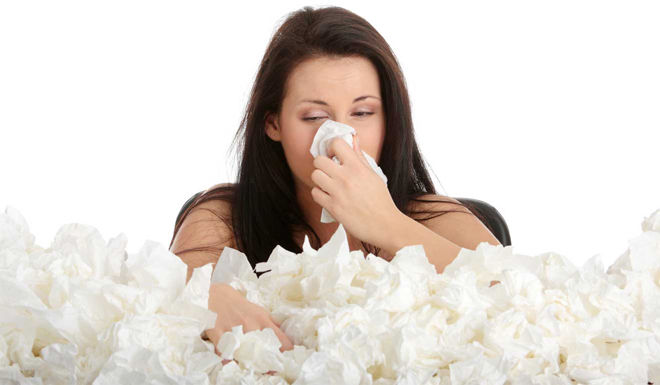
The current snot can be stopped if you stock up on a bunch of paper napkins
Types of rhinitis
From the nose flowing liquid snot like water? It is rhinitis, which can be acute or chronic. Depending on the reason, the following types of it are distinguished:
- infectious;
- allergic;
- vasomotor;
- medication;
- atrophic;
- hypertrophic;
- polypous.
If the acute form of the common cold has not been quickly cured, the disease becomes chronic. This is a fairly serious pathology, which affects the course of pathologies such as sinusitis, bronchitis, meningitis.

Related symptoms
In addition to a strong and abundant discharge of fluid from the nose, there may be a deterioration in the patient’s condition. The nose lays down, leading to decreased smell and difficulty breathing. Hyperthermia, sneezing, and lacrimation develop quite often. There may be a very bad cold.
In the nasal cavity, itching and burning are noted, which are very disturbing to the patient, and the mucous membrane becomes edematous. These phenomena prevent adequate outflow of fluid from the paranasal sinuses, which is a risk factor for the development of sinusitis.
Treatment of rhinitis
Treatment is prescribed by an ENT doctor based on the results of the examination. It includes the collection of complaints, anamnesis of life and illness, a general examination and rhinoscopy. Sometimes, additional research methods may be prescribed to answer the question of why water flows from the nose.
After completing diagnostic measures, the doctor receives information on how to stop the snot, which run a stream. General recommendations usually include:
- bed rest the first few days of illness;
- plentiful warm, preferably alkaline drink;
- the use of various heating procedures.
When clear water flows from the nose, inhalations are prescribed. If the disease proceeds with hyperthermia, they are used with caution, it is also possible to use antipyretic drugs.
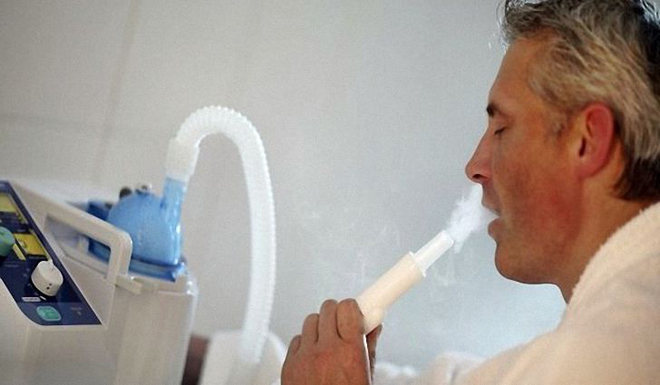
Inhalation - effective remedy in the fight against rhinitis
Local treatment
Such treatments include vasoconstrictor drops and sprays, as well as similar dosage forms with antibacterial and anti-inflammatory components. Among the well-helping remedies, Protargol and Collargol drops, which have astringent, antimicrobial and anti-inflammatory actions, occupy one of the first places.
Quite useful people's council is to maintain a wet microclimate in the room where the patient is, this can be done by hanging wet towels.
If a lot of mucus is flowing from the nose, it is very important to blow it in a timely manner, and it is very important to do it correctly. This is because the contents of the nasal cavity can get into the sinuses or inner ear. It is necessary to perform the procedure with a half-open mouth, with each nostril blowing out separately. Do not overly strain.
The remaining therapeutic interventions are performed depending on the type of rhinorrhea. Commonly used complex treatment, including cryotherapy, physiotherapy, massage, Novocain blockade, warming and laser treatment. In case of low effectiveness of these measures, surgical intervention may be prescribed.
Medications
Atrophic rhinitis implies local treatment drugs that improve trophism of the vessels of the nasal mucosa. Alkaline solutions and furatsilinovaya ointment are best suited. In order to increase the body's resistance, protein therapy, cocarboxylase, aloe, and vitamin complexes are prescribed. There is also a need for physiotherapy treatment, among which UHF is preferred.
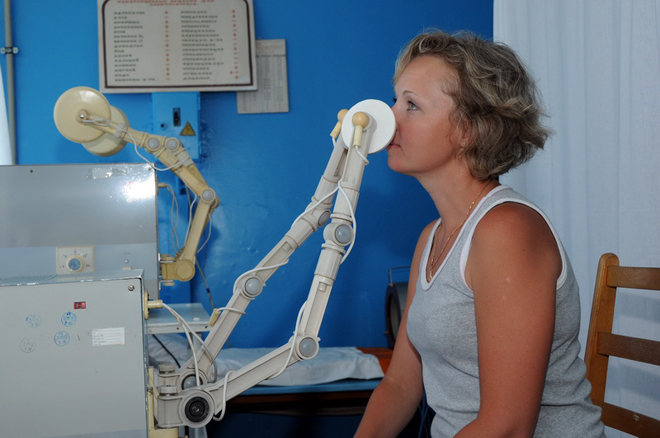
With allergic rhinitis It is very important to eliminate the allergen that caused the flow of snot. It is necessary to completely stop the contact of the patient with him. Drug therapy includes antiallergic agents, membrane stabilizers of mast cells, in some particularly severe cases, hormones are prescribed. The mucous membrane of the nose is irrigated with saline solutions.
It is necessary to carry out detoxification therapy of the body, which allows to alleviate the patient's condition.
Traditional medicine
Traditional medicine in conjunction with traditional methods allows you to answer the question: snot flowing stream, what to do? Honey compresses on the wings of the nose help very well. They warm and eliminate inflammations. Salt and sand warming work in the same way.
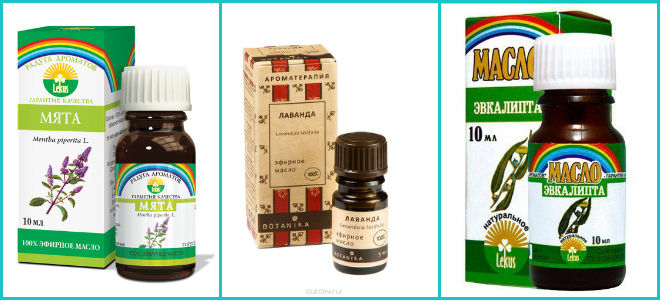
Rhinitis prevention
In order to prevent the appearance of abundant liquid discharge from the nose, as well as other catarrhal processes, special attention should be paid to treatment. inflammatory diseases respiratory organs. It is necessary to maintain immunity at a high level.
Regular washing of the nose will allow to normalize its mucous membrane.
Hardening should be carried out gradually, starting with a slight physical exertion. It is very important to normalize the diet in order to supply the body with all the substances it needs - vitamins, microelements. Food should be balanced in protein, fat and carbohydrate composition.
It is necessary to regularly carry out dry and wet cleaning in the room, airing. This is done to reduce contact with dust, which is one of the most important household allergens, and to combat the reproduction of infectious agents.
With the problem of a runny nose every child and adult is found. This is an unpleasant disease, which is popularly called snot. If a liquid that resembles water flows out of the nose, attention should be paid to its color.
Each color of aqueous fluid means a specific disease in the nasal cavity. These diseases include:
- sinusitis;
- sinusitis;
- rhinitis;
- allergy.
The water of clear color, flowing from the nose, is the first sign of the beginning disease. As a rule, the appearance of water from the nasal sinus is acute respiratory infections. Over time, the water will be replaced by a thick liquid that can hold for up to three weeks. To reduce the duration of treatment of rhinitis, you should use medical antiviral drugs and nasal drops. Do not forget to first find out the type of disease, its source of origin, before starting treatment. It is necessary to contact the clinic to the therapist and doctor Laura.
Symptoms with which you need to see a doctor:
- a few days goes purulent liquid green tint;
- runny nose does not stop more than ten days, watery eyes.
- shooting occurs in the area auricle with severe pains;
- excreted fluid is accompanied by increased temperature;
- headaches with discharge of blood clots;
- discharge of water from the nose appeared after a head injury;
- there was a purulent sputum accompanying cough.
Liquid discharge
Transparent liquid water is released from the body receiving a viral infection. Such infections are very fond of the habitat and reproduction of the nasal cavity. After the appearance of a viral infection, a runny nose lasts for three to five days. After this period, the inflammatory process begins, which may be accompanied by thick secretions of various shades. If inflammation of the nasal sinus begins, then fever with a cough rises. Sneezing, headache, and nasal congestion may also occur.
Transparent colorless liquid is often manifested in the following cases:
- allergic reaction to pollen, six animals, dust, food and much more;
- in violation of the vascular wall (vasomotor rhinitis);
- with long drug treatmentwhich contributes to the narrowing of the mucous wall;
- if there was injury to the nasal cavity (mechanical damage, overheating of the mucous membrane, hypothermia).
Special attention should be paid to nasal discharge if they started after a serious traumatic brain injury. After all, transparent snot may be spinal fluid. And it is dangerous for human health. Therefore, you can not hesitate and as a matter of urgency should contact the medical institution for assistance.
Thick discharge
If the initial stage appeared immediately thick snotthen it talks about acute infection. After a few days, their color will change to darker green or tan. This is usually due to allergies or a severe cold. Irritation of the mucous membranes can occur due to dry air. In children, the first indicator of inflamed adenoid is thick snot. They are especially dangerous for babies up to one year old. The mucus makes nasal breathing difficult, and the child cannot fully sleep, eat, drink and play.
If the final phase of rhinitis is already present, then the shade of the clots will be dark brown. Dark green clots also often indicate a disease such as sinusitis. When it occurs severe headaches when bending forward and constant nasal congestion. If sinusitis is chronic, the discharge will be yellow-green. In order for sinusitis to be confirmed, it is necessary to take X-rays and begin a course of antibiotics. If a nasal disease (pharyngitis, sinusitis, rhinitis, runny nose) will not be properly cured, the mucus will be able to drain on back wall pharynx, so nasal disease is better to timely treat.
Discharge with blood
With the manifestation of even small blood clots is an alarming moment, but not dangerous for life. They can appear with a strong blowing out, with the flu, from dry air, pressure, lack of hemoglobin and vitamin C. To avoid fluid with drops of blood from the nose, it is necessary to strengthen the walls of blood vessels with complex vitamins.
Liquid snot delivers the patient significantly more problemsthan the discharge of thick mucus from the nasal passages. This process is caused by the penetration of the infection into the nasal mucosa, resulting in its swelling and inflammation. In this case, inevitable are abundant discharge from the nose.
Abundant fluid from the nose also causes a person to feel unwell, manifested by headache, general weakness, dizziness. Often the infection spreads to the throat, so when viewed, it is often possible to notice its redness. With the rapid development of the disease in a short time, the patient begins to experience pain in the throat, may also be disturbed by coughing.
At which diseases in the nose appears clear liquid?
 The reason for the formation of fluid in the nose, as a rule, is determined by its color. After all, the color and consistency of mucus secreted from the nasal sinuses indicates the nature of the processes occurring in the nasal cavity. Usually water flows from the nose in the presence of any disease. As medical practice shows, water appears in the nose during the development of rhinitis, sinusitis, sinusitis, as well as allergies.
The reason for the formation of fluid in the nose, as a rule, is determined by its color. After all, the color and consistency of mucus secreted from the nasal sinuses indicates the nature of the processes occurring in the nasal cavity. Usually water flows from the nose in the presence of any disease. As medical practice shows, water appears in the nose during the development of rhinitis, sinusitis, sinusitis, as well as allergies.
If it flows clear liquid from the nose, with a burning sensation and itching, the inflammatory process most likely develops in the nasal cavity, caused by catarrhal disease. Abundant discharge water from the nose is observed at the initial stage of the flow of SARS. Soon the water will be replaced by the release of thicker mucus with a yellow or green tint.
Very often, a clear liquid in the form of water is released in the cold or during physical activities. In this situation, there is no need to treat this process, since it is considered to be quite normal.
But, in the case when water begins to flow from the nose when a person inclines, it is necessary to consult a specialist, as this may indicate the development of cystic sinusitis.
A runny nose appears when an allergic reaction to a specific pathogen occurs. If a runny nose is allergic in nature, the use of drugs is not required, the main thing is to eliminate the irritant.
How to stop the formation of fluid?
Very often, the process in which a clear liquid is secreted from the nose takes place in a few days. But sometimes such a runny nose can last for several weeks, and even months, causing not only discomfort to the sick person, but also representing a danger to his health.Treatment should be carried out depending on the causes of this phenomenon. If liquid rhinitis is caused by a viral infection, then such therapeutic actions should be carried out:
- Flush the sinuses saline, so you can wash all the bacteria present in the nasal cavity. For these purposes, it is also useful to use chamomile or sage infusions that have an antiseptic effect.
- Warm the nose and maxillary sinuses. This method of treatment should be used only in the presence of colds.
- Use vasoconstrictor nasal drops from rhinitis.
If the liquid rhinitis is allergic in nature, it is necessary to constantly ventilate the room, carry out wet cleaning, often wash your hair. Such actions will help reduce allergic manifestations, and over time, and completely eliminate the transparent liquid snot. Indeed, during the flowering of pollen can be not only in the air, but it also accumulates on the hair, clothing and furniture in the house.
If you have questions to the doctor, please ask them on the consultation page. To do this, click on the button:
Related records

Popular
- Breast cancer is curable at any stage.
- The remedy for the cold Sinupret
- Azitrox - official instructions for use
- Chicken-bjaka: allowed antibiotics were found in Russian chicken
- Oral Cancer: Symptoms and Treatment
- Dark and thick blood during menstruation.
- Modern analogues of doxycycline tablets
- Is it possible to die from pneumonia
- What earwax will tell all about your health
- Tussin: instructions for use



